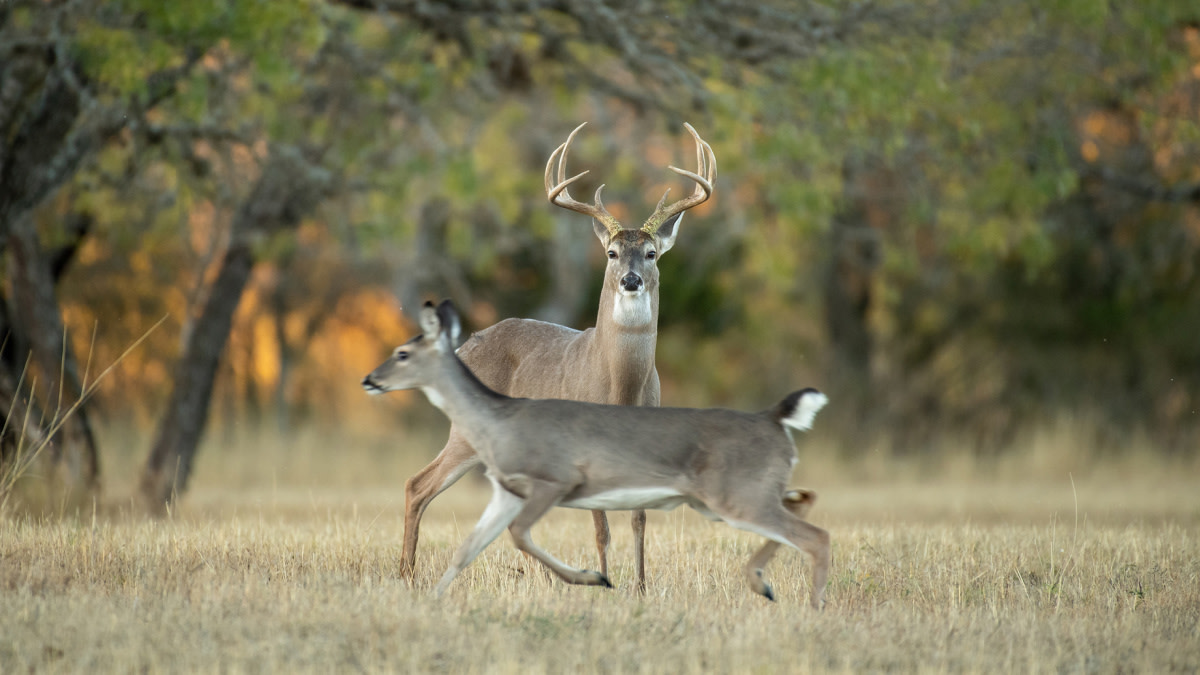
There isn’t a deer hunter out there who prefers warmer-than-average temperatures for a rut hunt. Even neophyte whitetail chasers intuitively understand that cooler is better when it comes to deer movement. The thing is sometimes you get dreamy conditions for your rut-cation and sometimes you get beach weather.
Take the rut of 2020 for example. According to the National Oceanic and Atmospheric Administration’s (NOAA) Global Climate Report, the contiguous United States experienced its fourth-warmest November since record-keeping began in 1895. They’re gathering data across the U.S. and ultimately the entire whitetail range, but it leaves a lot to be desired on a local level.
You might have experienced incredible rut weather while someone a state or two away was hunting in T-shirt conditions. In each case, it’s a surefire thing that the following April and May, plenty of fawns hit the dirt—signaling that, once again, the rut was a success. Much of that breeding undoubtedly occurred in the dark of night, but not all of it.
Hot Weather Considerations When the temps creep up well past seasonal averages you can count on a few things. The first is that you’re likely to see some subdued movement. Several studies on what affects deer movement show that this behavior is not only in our heads but really exists. These studies also indicate that does are more likely to stay bedded for longer periods of time during hotter weather, which will obviously cut down on the number of deer sightings hunters will have.
This is useful information. Instead of riding out the days from dark to dark on a killer funnel, it might be a better idea to cozy up to the downwind side of known doe bedding areas. If those areas are in close proximity to a water source, that’s even better. I used this strategy this season while filming our One Week In November series in southwestern Wisconsin (the first episode drops on November 16th on MeatEater's YouTube channel). A succession of doe bedding areas in close proximity to a pond tucked into the bottom of a valley set up perfectly for cruising bucks when the mercury broke 60. If you want to see how well it worked, check out the sixth episode of One Week in November, which should drop in late December.
Microclimates I first heard the term “microclimate” while chatting with a deer biologist about why deer seem to bed in the corn so much. I had assumed it was due to the cover, but he mentioned that when it’s hot out, the deer like to bed where they might catch some wind but can also lay in the cool, damp soil of a cornfield.
Ever since that chat, I’ve come to realize that the world is full of microclimates. I run through one on a route that dips through a cattail swamp in a park. Although the difference in elevation between most of the trail and the 100 yards of lowland is maybe 40 feet, the air is always noticeably cooler. Sometimes it feels like a difference of eight or 10 degrees.
Now think about if you lived your entire life outside in a patch of land that consisted of roughly 640 acres. You’d know the location of every one of those microclimates and when they’re most beneficial to your comfort and survival. The bucks and does know where they are. You should, too.
Find Them, Hunt Them In 2016, I drove to Nebraska in 75-degree weather to bowhunt public land during the heart of the rut. I spent two days wasting my time on the tops of the bluffs (heat rises, after all) hunting on memories of big bucks chasing does across the countryside. Far below me was a small stream winding through a valley. It was lower, shadier, wetter, and worth a shot.
It took all of about 15 minutes of sitting after a speed scouting session to arrow a cruising 10 pointer in the middle of day. From my first efforts I’d have bet good money that the rut was on hold until dark. I was wrong.
When the rut should be cranking but the mercury is a little too tall, I consider the properties I hunt and what they offer. If there’s a good chance to play off a microclimate, which could include just a small, shady spot on the edge of a CRP field that catches the November breeze, I’ll go mobile and start investigating. Fresh tracks, fresh sign, anything that indicates current deer movement (including sightings), and I’m in a tree.
If that isn’t the play, the obvious alternative is to work the water angle, the doe bedding angle, or both. The rut is going to happen, the deer are going to get thirsty and frisky, and if you’ve got a water source to work or a thicket full of ladies, work it. The main upshot of this is that while the movement might be subdued, it’s rarely totally dead. The bucks will be out there looking and you just need to get in where it will happen.
If you guess wrong, keep looking. Somewhere out there the deer are cruising, chasing, and working on producing the next generation of fawns.
Feature image via Matt Hansen.






Conversation